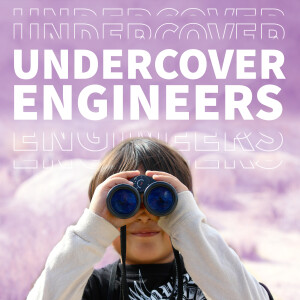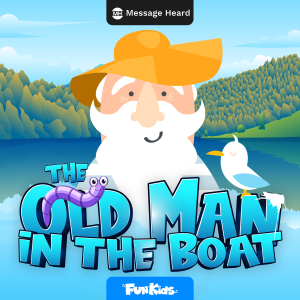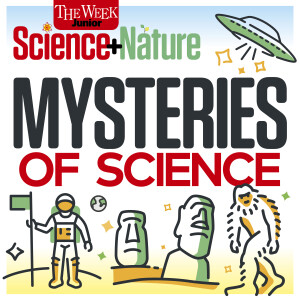

Fun Kids Science Weekly
https://www.omnycontent.com/d/playlist/289ceca7-bef3-48af-9f74-a4ba0095cab1/14b69fe4-635d-4253-bccf-aa710001b221/ed19a8b4-abae-4e93-af4b-aa710001b234/podcast.rssEpisode List

Dinner in Zero Gravity: The Weird Science of Space Food 🍕👨🚀
It’s time for another trip around the solar system on the BIGGER and BETTER Science Weekly! In this episode of the Fun Kids Science Weekly, we answer YOUR questions, have scientists battle it out to determine which science is the best, and this week we're learning what would happen if the Sun disappeared! We start with Science in the News... First up, we dissect Michele Dougherty appointment as the new Astronomer Royal — the first woman ever to hold the role. Then, we look at a new satellite launched to help scientists keep a closer eye on Earth’s changing climate. And finally, Dan speaks to James Horsey from the British Pest Control Association to find out why wasps are making a strong comeback this summer after several quiet years. Then, we answer your questions! Etta wants to know: what would happen if the Sun disappeared, and reserve astronaut Meganne Christian answers Sean's 'Why do astronauts need space food?' In Dangerous Dan, we learn all about the Giant Water Bug! And in Battle of the Sciences, we investigate a killer fungus with cellular biologist Carolyn Elya. What do we learn about? · Who the new Astronomer Royal is· Why wasps are making a comeback this summer· What would happen if the Sun disappeared · Why astronauts need 'space food'· And in Battle of the Sciences... a killer fungus! All on this week's episode of Science Weekly!Join Fun Kids Podcasts+: https://funkidslive.com/plusSee omnystudio.com/listener for privacy information.

MIDWEEKLY: Hydrogen-Powered Planes?! The Future of Flying Revealed ✈️🔋
Welcome to FUN KIDS SCIENCE WEEKLY - REACH FOR THE SKY SPECIAL – the podcast that explores the future of aviation – from the design and sustainability of future planes to the people who keep them flying and make sure our experience special. One of those people is Helen Leadbetter who works for the Civil Aviation Authority as the Zero Emissions Flight & Hydrogen Challenge Lead. I met up with her so she could tell me more about the work she and the CAA do to prepare for a greener future. Here’s Helen Leadbetter, from the Civil Aviation Authority. And Amy and Zac dive into the sustainable side of aviation, both for when aircraft are in service and after they retire. From smart new materials and greener fuels to recycling and reusing.Join Fun Kids Podcasts+: https://funkidslive.com/plusSee omnystudio.com/listener for privacy information.

OUCH! Cracking the Mystery of Pain 🤕💥
It’s time for another trip around the solar system on the BIGGER and BETTER Science Weekly! In this episode of the Fun Kids Science Weekly, we answer YOUR questions, have scientists battle it out to determine which science is the best, and this week we're learning all pain! First up, scientists have cracked the code on how and why we sweat—get ready to be surprised! Then, we’re blasting off to the outer solar system to explore a ground-breaking discovery about the mysterious planet Uranus. And finally, Dan is joined by James Veale, a drilling engineer with the British Antarctic Survey, fresh from Antarctica where he helped recover a million-year-old ice core. Then, we answer your questions! Sean wants to know: How hot the Earth's core is and Dr. Stuart Cohen answers Iris’ question: why does our skin go red when skin is burnt? In Dangerous Dan, we learn all about the Armadillo Lizard. And in Battle of the Sciences, we delve into the science of pain with Laurenz Casser from Sheffield University. What do we learn about? · An fascinating new discovery about Uranus.· We’ll learn how a 1.5-million-year-old ice core reveals Earth’s hidden past.· Why our skin turns red when burnt· The Armadillo Lizard· And in Battle of the Sciences... the science of pain! All on this week's episode of Science Weekly!Join Fun Kids Podcasts+: https://funkidslive.com/plusSee omnystudio.com/listener for privacy information.

MIDWEEKLY: What's The Biggest Volcano in the World? 🌋🔥
Welcome back to the Fun Kids Science Mid-weekly! You've been sending in your questions and this week... Winnie’s curious about how books are made. Tig wants to know what the biggest volcano in the world is. Luke is wondering which snake is the deadliest. Misha’s asking how braces work. Alex has the all-important question… why do humans need to go to the toilet every day? And we meet Amy Aviation who loves planes! In this episode Amy explains what a delta wing is and how different shapes wings can change how planes fly.Join Fun Kids Podcasts+: https://funkidslive.com/plusSee omnystudio.com/listener for privacy information.

DEEP SEA SECRETS: What Hides Beneath the Waves 🌊🐙
It’s time for another trip around the solar system on the BIGGER and BETTER Science Weekly! In this episode of the Fun Kids Science Weekly, we answer YOUR questions, have scientists battle it out to determine which science is the best, and this week we're learning all about the ocean! First up, scientists have discovered a brand-new species of flying reptile that lived more than 200 million years ago. Then, we take you to Indonesia, where a volcano has erupted, sending a towering ash cloud 11 miles into the sky. And finally, Dan chats with Richard Buggs from Queen Mary University of London and Kew Gardens to learn how Britain's ash trees are fighting back against a devastating fungal disease. Then, we answer your questions! Etta wants to know: What happens if you're stung by 100 bees and Dr. Emma Nicholls answers Jessica’s question: How do scientists know dinosaurs had feathers? In Dangerous Dan, we learn all about the Weever fish. And in Battle of the Sciences, oceanographer Alessandro Silvano explains the power of the seas What do we learn about? · A 200 million year old flying reptile species · How Britain's trees are fighting back against a fungi disease· How scientists know dinosaurs had feathers· The Weever fish· And in Battle of the Sciences... what lies beneath the ocean! All on this week's episode of Science Weekly!Join Fun Kids Podcasts+: https://funkidslive.com/plusSee omnystudio.com/listener for privacy information.
Create Your Podcast In Minutes
- Full-featured podcast site
- Unlimited storage and bandwidth
- Comprehensive podcast stats
- Distribute to Apple Podcasts, Spotify, and more
- Make money with your podcast












